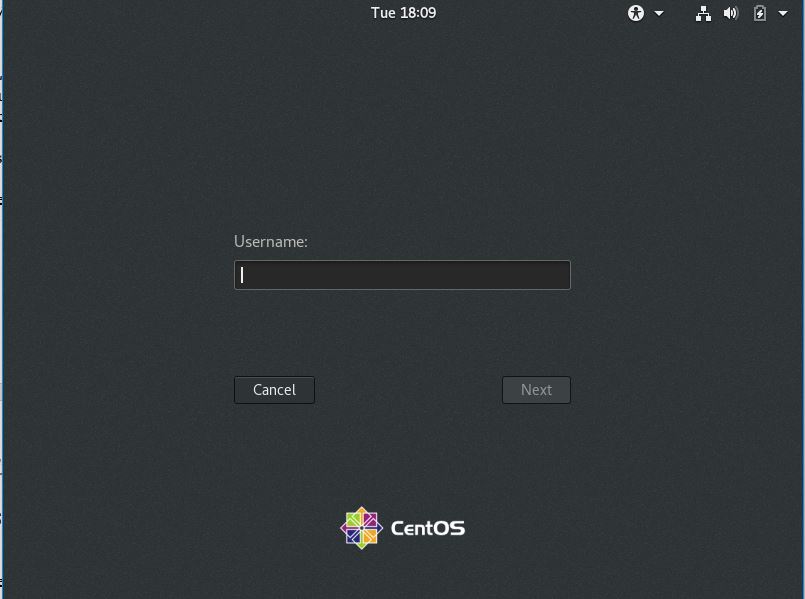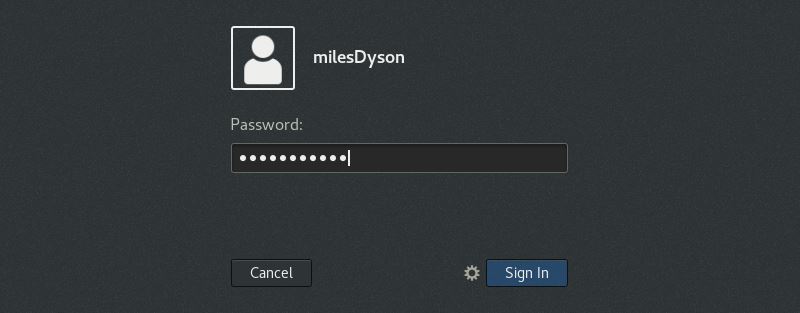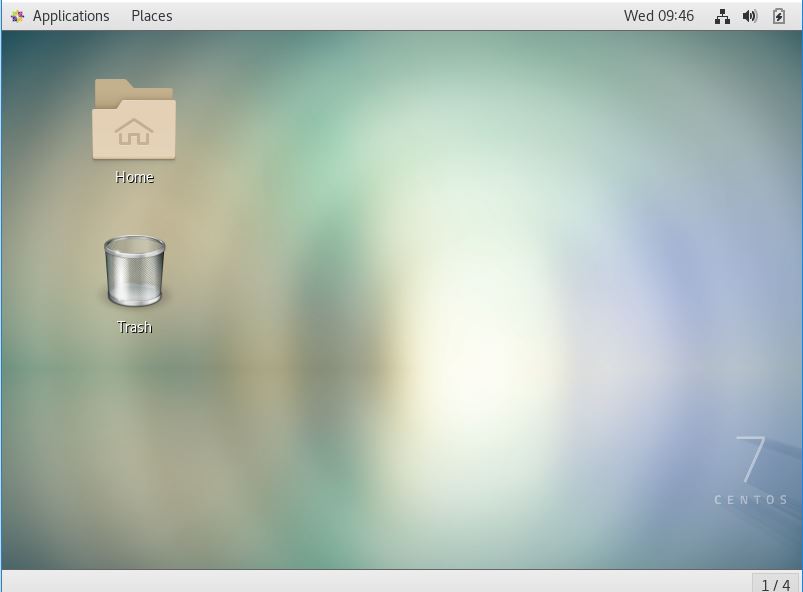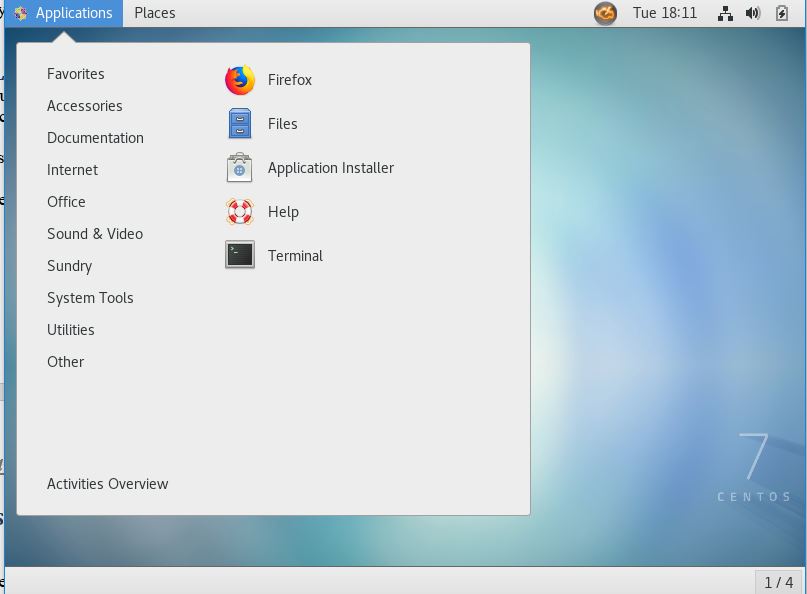In this section you’ll learn how to login if you’ve installed a Linux Desktop environment on one of your own computers or in a virtual machine. In addition, you’ll learn how to open a Terminal window, which will allow you to type commands. If you’re familiar with Microsoft Windows, a Terminal window is like a Command Prompt window. If you want to connect to a Linux or UNIX server on the Internet you should skip this section and go to the section below. Note that this assumes you installed the Linux server, and know the username and password for an account on the system.
Here are the steps for logging in:
1. Ensure the Linux system is booted.
2. The system will display a login screen similar to the following. The screen shown is from a Linux server running the CentOS 7 distribution. If you’re running a different distribution the screen will look similar but assuredly be different. Enter your user name at this point ensuring that you use the correct case. When you do this keep in mind that Linux and UNIX are case sensitive, which means it makes a distinction between upper-case and lower-case characters. This means if your username is benDover you must enter it with lower case ben, upper case D and lower case over. If you enter the characters in a different case, for example BENdover, the login process will see it as a different user name and not recognize it as valid. When you’re done entering your username hit the <Enter> key or press the Next button.

3. The Password screen will be displayed. Enter your password. When you enter your password the characters may not appear as you type them. This is done as a security measure to prevent “shoulder surfing” which is when someone looks over your shoulder at your password as you enter it. Many password systems hide the actual characters but display a substitute character like * instead, just to provide some feedback and assurance that you’re typing something. But even knowing how many characters you type can help an attacker, and really decrease the amount of time required to crack your password. So, don’t be concerned if you type your password and nothing is displayed. Just hit the <Enter> key when you’re finished and you’ll be logged in, assuming you entered the password correctly. In this case, with the CentOS Linux distribution, the login process will display a • for each character you type, hiding your password. When you’re done entering your password hit the key or press the Sign In button.

4. If you login successfully the system will display the Linux desktop. This will look similar to the Microsoft Windows desktop, but it won’t be exactly the same. The following figure shows the desktop for CentOS 7. If you’re running a different distribution the desktop will generally be the same, but once again it won’t be exact. However, you should be able to quickly figure out how to do basic things like use the menus, start and close applications, etc.

5. To type commands you will need to open a Terminal window. In CentOS this is done by clicking the Applications menu in the upper left, selecting Favorites, then selecting Terminal.

- The following figure shows a Terminal window. The text string displayed in the window, in this case [milesDyson@skynet ~]$, is called the command prompt.
This is the system’s way to indicate that it’s waiting for you to enter commands. The command prompt is typically a % or $ for normal user accounts, and a # for the administrator account which is commonly called root. However, the command prompt can be easily customized, so it could be almost anything. In this case the prompt shows the user name and server name, followed by a $ to indicate that this a normal user account.

At this point you can begin typing commands.
